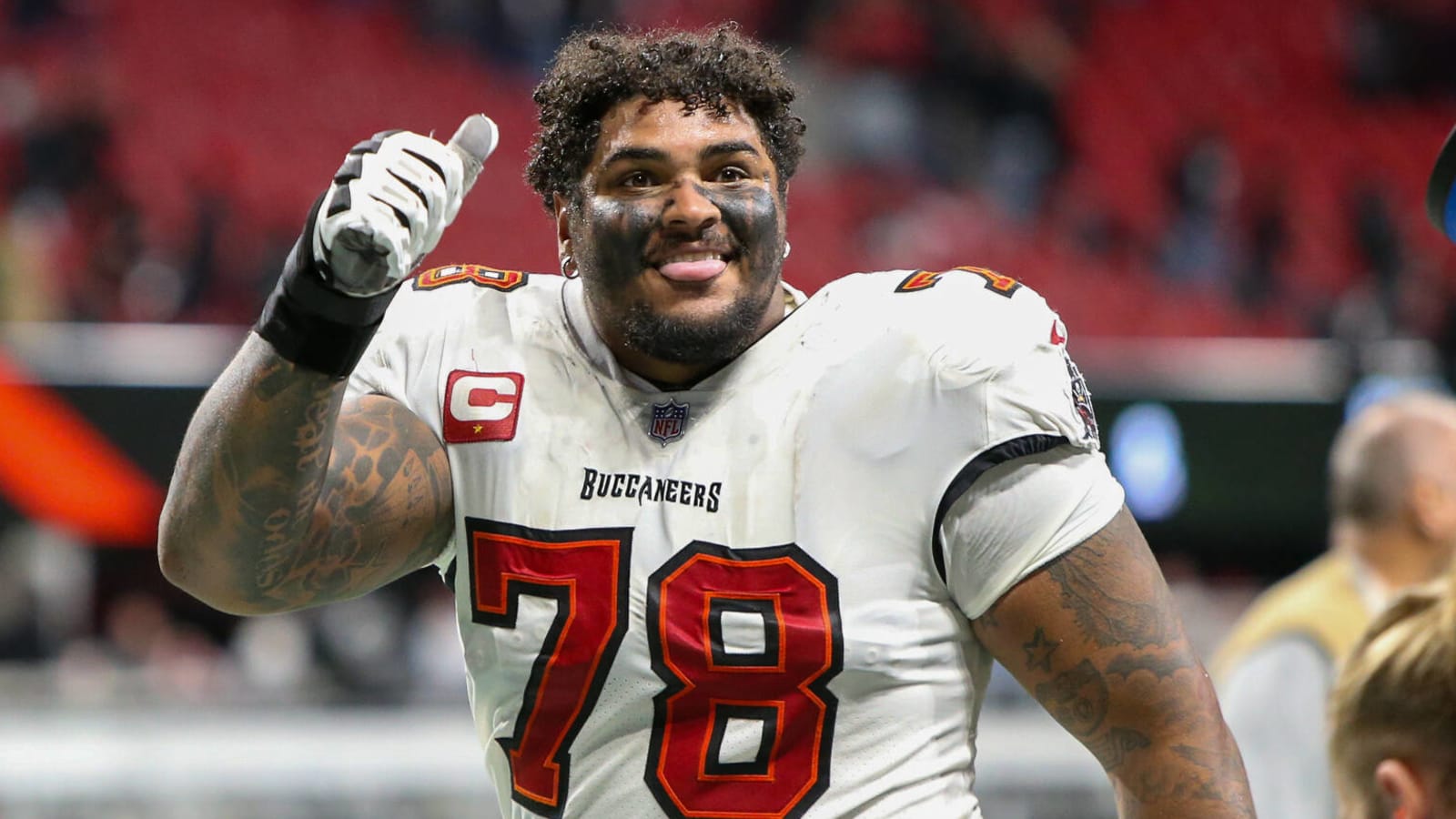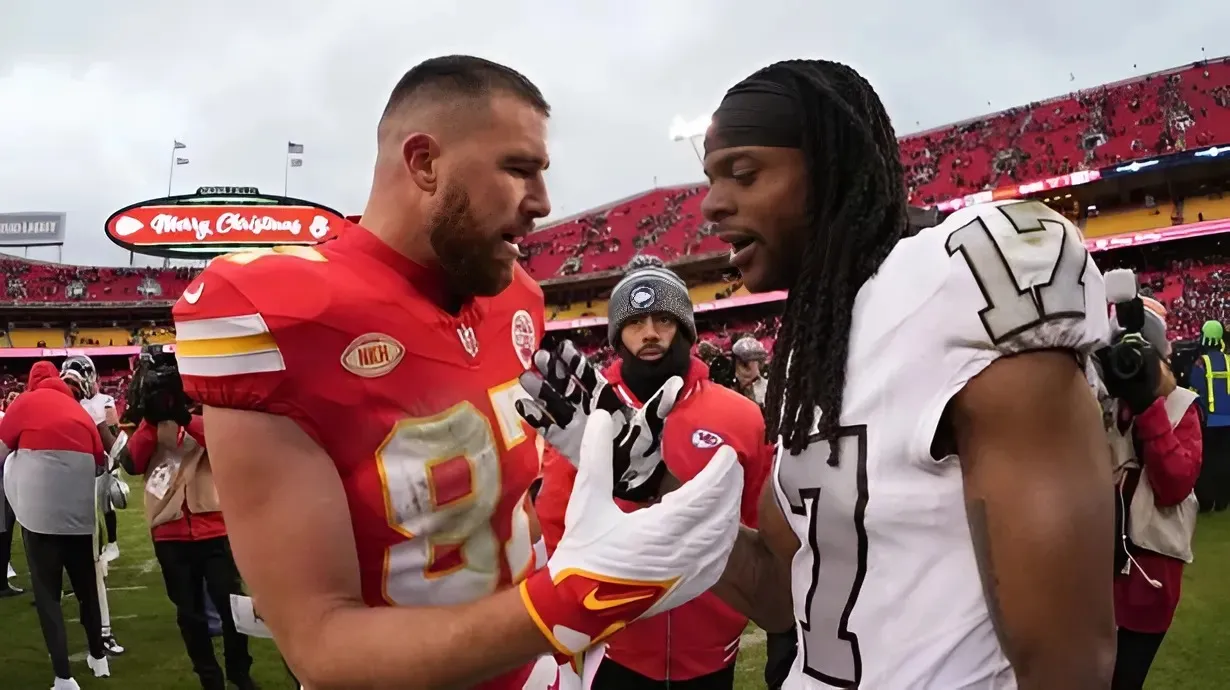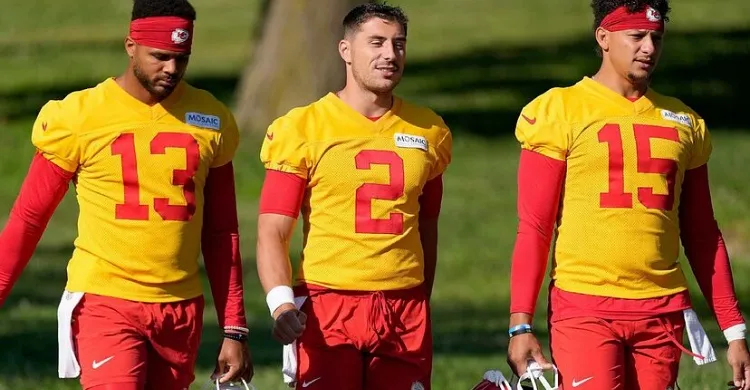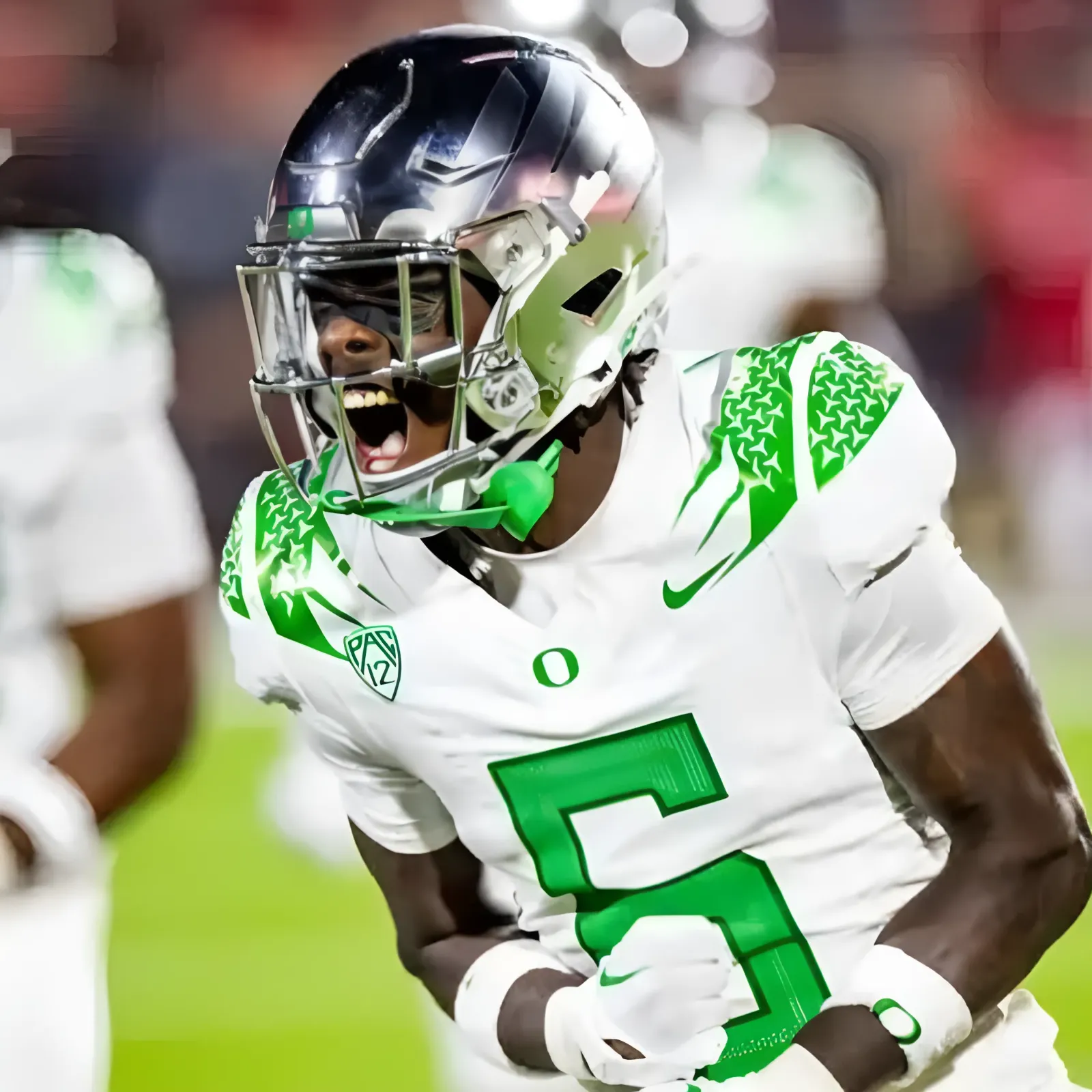The Bucs will not only use the 2024 offseason program to work on the players getting bigger and stronger in the weight room as well as getting faster, but also to improve in certain areas. While head coach Todd Bowles will be installing some new wrinkles on defense and new offensive coordinator Liam Coen and his new assistants will be installing a new playbook, each Bucs player will be tasked with honing their skills and working on some individual weaknesses.

With input from the Bucs coaches and front office members, as well as my own analysis and observations, I’ve come up with one specific area for each player to work on heading into training camp and the 2024 season. I’m only evaluating players that saw true playing time last year in Tampa Bay and leaving rookies and newly acquired free agents that played elsewhere out of the equation.
This is the third part of a seven-part series that will examine a position group or two of Bucs players. Today, it’s Tampa Bay’s offensive line. Next up will be the Bucs defensive line.
Where Each Bucs Player Can Improve: Offensive Line
LT Tristan Wirfs – Limit The Sacks
Wirfs made a successful transition from right tackle where he was an All-Pro and a Pro Bowler to left tackle last year as he replaced Donovan Smith. Wirfs showed he had the skill to protect Baker Mayfield’s blindside, but the move wasn’t totally seamless. The former first-round pick didn’t make the Pro Bowl last year until San Francisco’s Trent Williams couldn’t participate due to the 49ers’ appearance in the Super Bowl.
Wirfs is totally capable of being just as dominant on the left side as he was on the right side due to his elite athleticism and Herculean size. At 6-foot-5, 345 pounds, Wirfs is a massive man who takes pride in being the best in the league. But he wasn’t the best last year, and that’s to be expected because everything was backwards for him from his steps to his punch in pass protection.
Wirfs gave up a career-high five sacks last year along with six quarterback hits and 13 hurries, according to Pro Football Focus. He only allowed one sack as a rookie and just three sacks in each of the next two seasons. For him to become a better left tackle and get back to a true Pro Bowl and All-Pro level he’ll need to give up a few less sacks this season. Wirfs was battling some injuries late last year, which certainly didn’t help. Another year’s worth of experience and a healthier 2024 campaign should do the trick.
C Robert Hainsey – Get Bigger And Stronger
Hainsey is on the verge of being replaced as Tampa Bay’s starting center, a role he’s had for the past two seasons since he filled in for the injured Ryan Jensen. While he’s been lauded for his intelligence in terms of calling out protections and making line calls in the running game, Hainsey has struggled at times with the physical part of being a center. Listed at 6-foot-4 and 306 pounds, Hainsey lacks ideal size, especially in his lower body. That limits his push in the running game and his effectiveness in anchoring in pass protection.
That has prompted the Bucs to draft Graham Barton, a bigger, more athletic lineman, in the first round. While Barton played left tackle at Duke for three years, he was also the Blue Devils center as a true freshman and started five games. Barton is penciled in as the team’s starting center, supplanting Hainsey unless the fourth-year lineman rises to the occasion in training camp and wins the job. If that happens, Barton could fill the vacancy at left guard as a rookie.
Hainsey has apparently made strides in the weight room this offseason and has gained some necessary size and strength. He needed too, as Hainsey has twiggy calves. That will be key in making a good first impression with new offensive line coach Kevin Carberry and offensive coordinator Liam Coen. Hainsey, who is entering a critical contract year, is better suited to play center than guard. So, his best chance of staying in the starting lineup would be to remain at center and force Barton to play guard.
RG Cody Mauch – Transform His Body
There’s no doubt that Mauch has plenty of potential to develop into a very good guard in Tampa Bay. While his rookie season was filled with some ups and downs, there were several high-level reps from the second-round pick in every single game. Entering his second year with the Bucs and working with new offensive line coaches Kevin Carberry and Brian Picucci, Mauch will need to work on eliminating the bad reps and becoming more consistent snap in and snap out in 2024.
Mauch had a tough transition from playing left tackle at North Dakota State to playing right guard in the NFL, but his rookie season was better than Luke Goedeke’s was in 2022. He has enough length, athleticism and tenacity to become one of the league’s better guards in time but must transform his body this offseason. At 6-foot-6, 303 pounds, Mauch has an angular build and looked like an offensive tackle playing guard last year. His lack of core strength didn’t do him any favors as he had to lunge too often in pass protection. As a result, Mauch surrendered a team-high eight sacks, seven QB hits and a whopping 42 hurries.
The key to Mauch successfully becoming a full-fledged guard will be to add size and strength to his lower body and get bigger calves, thighs, glutes and strengthen his hips and core. That’s the same thing that former Bucs lineman Alex Cappa had to do when he transitioned from being a left tackle at Humboldt State to becoming a right guard in Tampa Bay several years ago. Building strength in his lower body will help Mauch get more push in the running game and hold up better in pass protection – ultimately resulting in winning more reps each game.
RT Luke Goedeke – Cut Down On The Penalties
Tristan Wirfs and Cody Mauch weren’t the only ones who were making a transition to a new position last year in Tampa Bay. Goedeke, the team’s second-round pick in 2022, certainly found his home at right tackle, which is where he played his final two seasons at Central Michigan. The 6-foot-5, 312-pounder held his own against some of the league’s best pass rushers last year, including the likes of Aidan Hutchinson, Cameron Jordan, Danielle Hunter and Haason Reddick to name a few. But lack of proper technique led to lunging at times, as Goedeke gave up six sacks, five QB hits and 33 pressures.
The lack of technique didn’t just show up in sacks and pressures. According to NFLPenalties.com, Goedeke was the most penalized Buccaneer last year. He was flagged 13 times with three of those penalties being declined. Goedeke drew eight offensive holding penalties and was guilty of five false starts. Improved concentration will help in 2024, and he should have a goal of cutting that penalty in half, as no offensive lineman can reasonably finish a season penalty-free.
New offensive line coaches Kevin Carberry and Brian Picucci can help Goedeke refine his technique this offseason and work on his pass sets and hand placement. That should help reduce his number of holding penalties moving forward. The good news is that Goedeke started all 19 games at right tackle last year, so he has plenty of his own film to critique and learn from. If Goedeke can make strides in this area with better technique, he’ll also see a reduction in sacks and pressures allowed, and he can elevate his league standing among right tackles.



